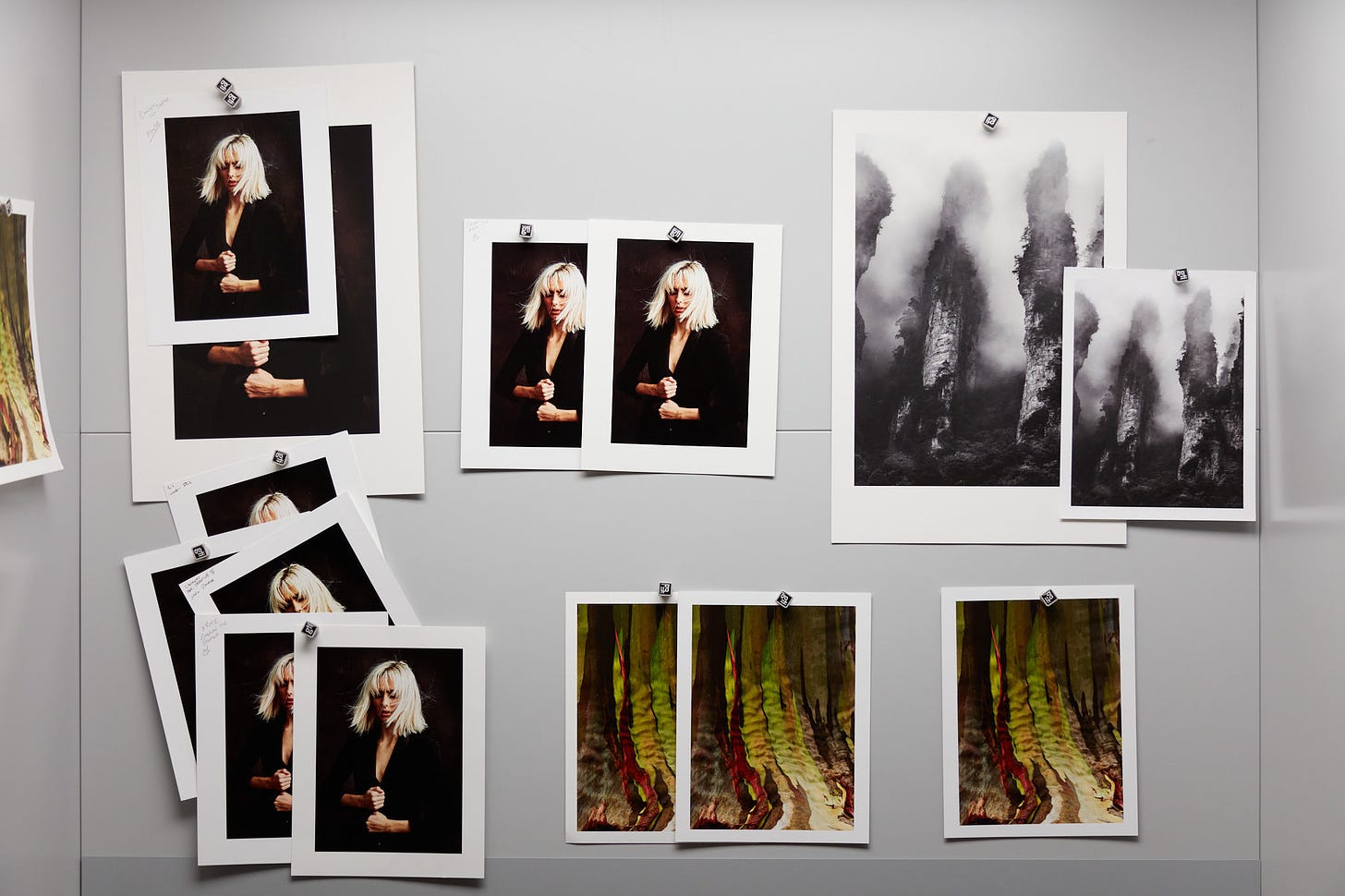Long overdue, our first comparison of baryta fine art inkjet papers is here. We’ve had more than our share of trials, tribulations, frustrations, and challenges with the first installment. More on all that another day.
Way back in July, we ask all of you where we should start our comparisons. You answered. In the survey our Moab go-to Juniper was ranked third. Number 2 was Canson (all of their baryta offerings). We decided to compare one of their papers first.
Evaluation Criteria
Since we’ve been using Moab Juniper for years all comparisons will be relative to that. We didn’t want to make these comparisons with a perspective of better or worse. Instead, the focus was toward qualitative characteristics that will allow those who use one of the papers (Moab Juniper or Canson Baryta Prestige II in this case) to get a sense of meaningful differences and how those would relate to your work.
We didn’t develop or perform technical metrics as those typically don’t translate to what a print will look like. Instead we developed a list of visual criteria that most of us would consider when critically viewing two otherwise identical prints side-by-side. We also threw in a few practical criteria when using the papers. Here’s the criteria we settled on:
Apparent DMAX (how black are the blacks)
Apparent saturation (typically this goes hand-in-hand with DMAX but there are exceptions)
Surface gloss
Shadow gradation (lower quarter of the histogram separation)
Highlight gradation (upper quarter of the histogram separation)
Base color (cooler or warmer relative to Moab Juniper)
Weight (the density/weight as well as the actual thickness)
Feel (somewhat subjective feel in the hand with a description)
Manufacturer ICC profile (how good or accurate is it)
Flatness (for cut sheets)
Cost (relative to Moab Juniper)
Any relevant notes for printers we discover that don’t nicely fit into a criteria
We decided to use a numbering system so at the end of this odyssey we’ll be able to publish a quick comparison guide that will point printers in the right direction based on what paper they are familiar with. That numbering system puts Moab Juniper at zero in every category. The paper we compare will get a score either less or more than 0 indicating the direction of variation from Juniper. We used minus 3 to plus 3 as the arbitrary values. A magnitude of 1 either way is a very small difference noticeable when comparing side-by-side on the same exact output file. The magnitude of 2 means a significant difference that’s very noticeable. A magnitude of 3 means night vs. day.
In the case of weight negative numbers will be thinner, positive numbers thicker. For base color negative will mean cooler and positive numbers, warmer. For feel we predict using only positive numbers with a note on the difference in how the papers feel. I guess there’s a possibility Les and I simultaneously exclaim YUK when touching a paper but I don’t anticipate that.
Moab Juniper Vs Canson Baryta Prestige II 340
Which one is better? Neither, both Les and I agree they are extremely close and one couldn’t really tell the difference if not side by side in a viewing booth when it comes to visual characteristics. If the proverbial gun was put to the proverbial head, I’d choose the Canson purely based on the surface and weight in hand. I personally like don’t care as much about shadow separation and love pressing highlights to the edge. Les would go the other way based on the slightly better shadow rendering and DMAX of Juniper. He also likes the surface of Juniper a tad more.
The cost listed is for a 10 sheet box of letter sized paper. Yes, the Canson is a tiny bit more expensive than Juniper. Tiny meaning a meager percentage but this may be meaningful as sizes and quantity go up. On the other hand, given the significant difference in weight I am surprised the cost of the Canson is not more. It’s your call as what paper is the ”bargain” given their similar performance.
One other consideration is that both the boxes of Canson in 8x10 and 11x17 we procured are uncannily flat. This could be anecdotal, we don’t have a long track record. Paper as flat as the Canson was relieves some anxiety when printing such a thick paper. Head strikes can ruin a print if one is not vigilant. For those Canson users out there, is this what you’ve experienced or does it vary?
As always, if we missed something or there’s anything you’d like to know I didn’t cover, just ask. If you’ve observed differently than we have, please share. We’ve already started the next comparison — Hahnemüle Fine Art Baryta. Keep an eye out.
If you like what we do and want to help fund our efforts consider a paid subscription. For those that already have helped keep the lights on, a big THANK YOU!






Outside of the Canon papers, only have tried a Canson sample pack & have a sample pack from Red River. Probably try Moab & Hanemulle (probably spelled incorrectly) next. For the most part, I like the Canson papers better than most of th RR papers I have tried. Definitely more Dmax on th Canson than the Canon papers. Although I just picked up a box of The Canon Premium Fine Art Smooth. Impressed with the weight & feel. Printed is a little closer to that of the Canson Aquarelle type of papers without the heavy texture. I know, off topic but felt like replying.
Thanks, Tom